Kazakh National
Food and Drinks
Kazakh food
Kazakh food is profoundly based on the nomadic past of the Kazakh people. Meat has always been dominating the main meals with mutton and horse together with numerous milk products. The methods of food preparation of the nomadic culture developed essentially in order to secure food preservation. Therefore, there are many dishes based on smoked meat and soured milk. There was almost no possibility to grow vegetables, but it was possible to exchange some things with neighboring settled nations. The main foods in Kazakh cuisine are still based on the combination of meat dough and onion.
When Kazakhs began a more settled way of life, they started to adopt various culinary traditions and enrich their cuisine with the influence of kitchens of those who lived nearby — Russians, Ukrainians, Belarussians, Koreans, Uzbeks, Kyrgyz (very close to Kazakh food culture), Uighurs, Dungans and even Chinese. The result that is a unique blend of food cultures, is today’s Kazakhstan’s national cuisine.
Kazakh Noodles
What differentiates the Kazakh cuisine from other Central Asian cuisines are the noodles. There are more varieties of noodles here and they are taken very seriously. It is also not uncommon to have hand made noodles in Kazakh restaurants and especially in the homes of the rural villages.
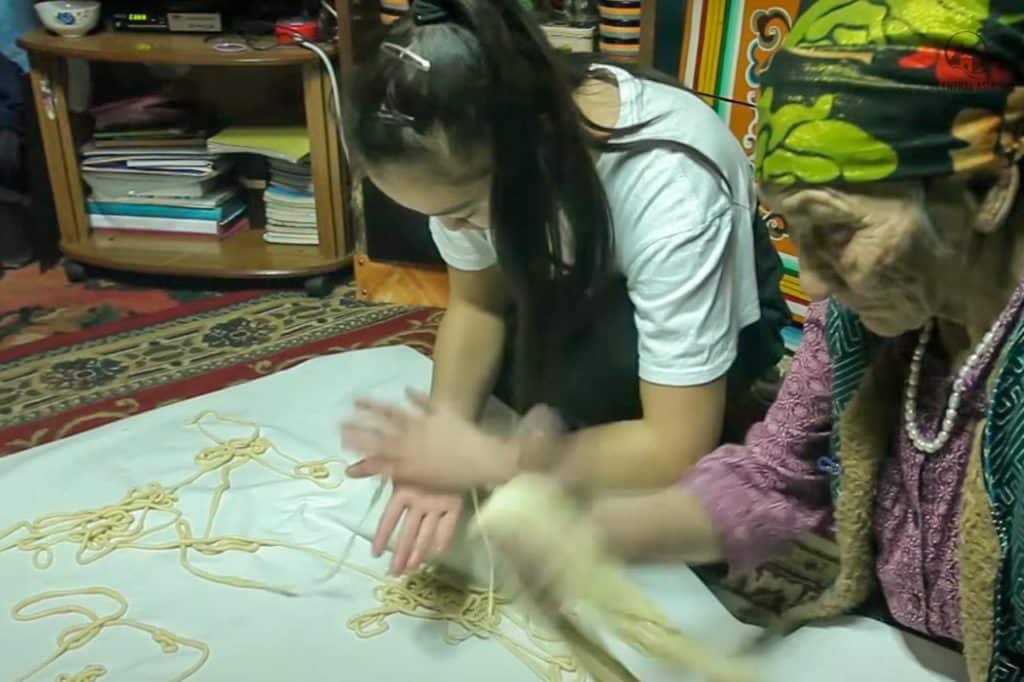
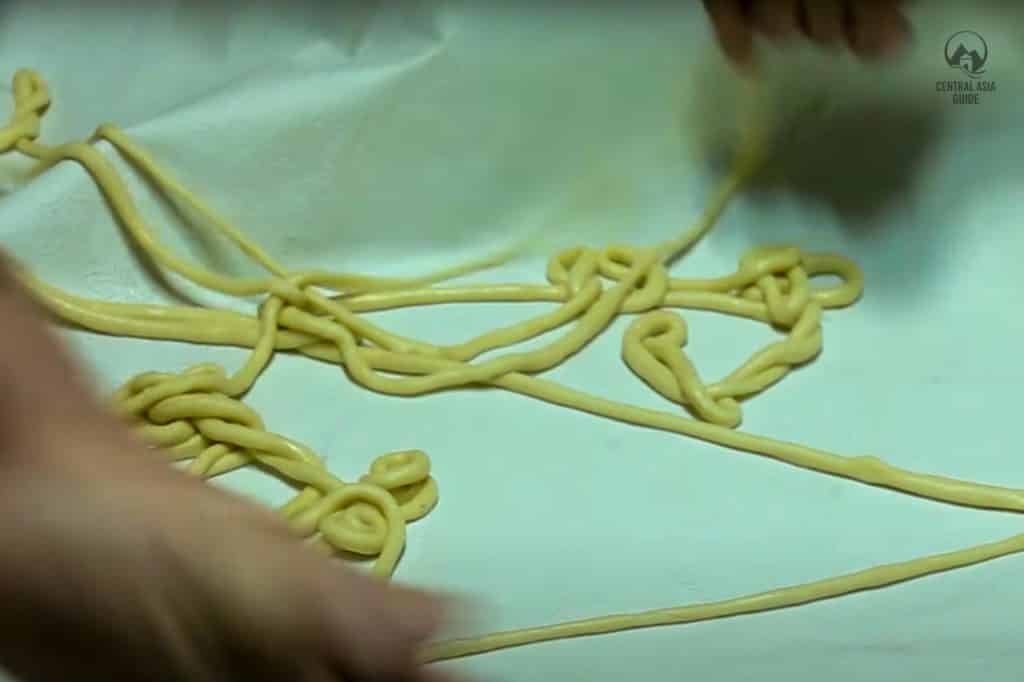
Kazakh feast Table
Nauryz Kozhe
Nauryz kozhe is a traditional food for Nauryz (Persian celebration of a new season). This dish combines seven ingredients: smoked meat, milk, millet, wheat, corn, water and butter. Today the recipe for “kozhe” is changing as it often started to have some additions depending on the taste preferences of the one preparing it.
Dastarkhan
Dastarkhan is a covered table with many dishes, it is believed that the richer the dastarkhan is in the house, the more hospitable the owner is and the more favorable the fate is to them.
In Kazakhstan they say “before doing any business with the guest, feed him first”.
Dastarkhan is typical for all Central Asia and the grandest tables are usually seen in weddings and other large celebrations. It is also customary that the guests take home what remains in the table at the end of the party. Nowadays it is also common to have other than strictly Kazakh dishes in dastarkhan, e.g. sushi or other internationally known dishes.
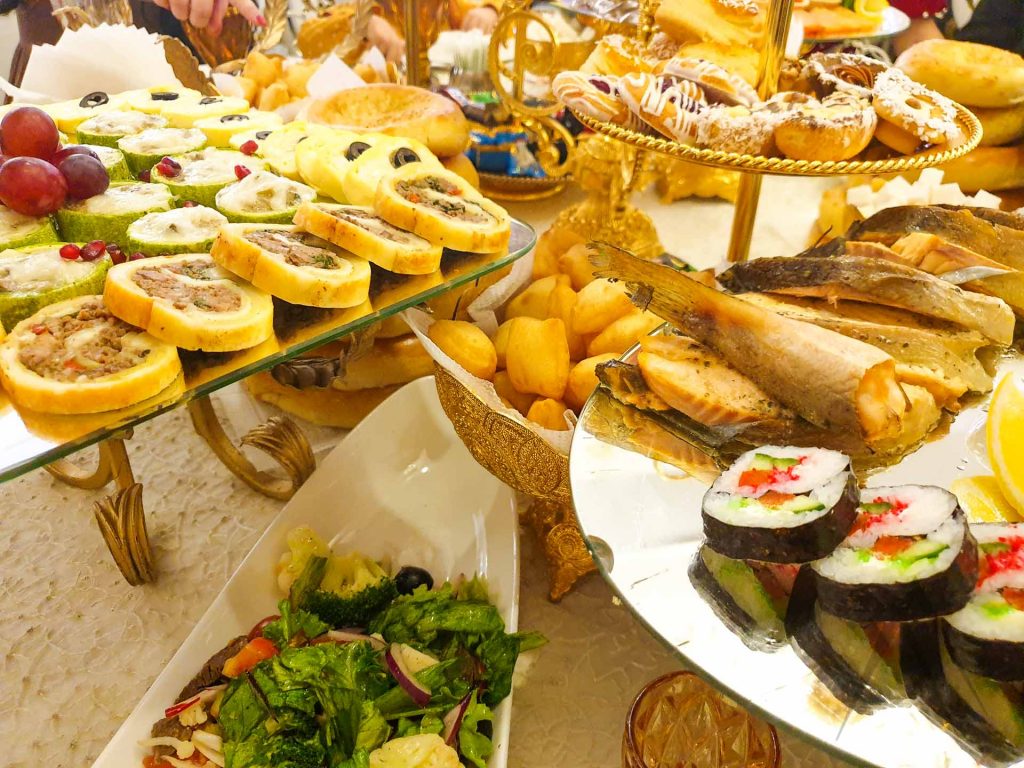
Kazakh Meat Dishes
Most Kazakh dishes consists of meat, particularly from the meat of horses, camels, cows and sheep. Horse and camel meat are the two primary types of festival meats compared to Kyrgyzstan where camel meat is a rarity. On the other hand, camel is still not as typical for festivities as camels are not as common as horses in Kazakhstan. Mutton and beef are as more common as the meat of the dishes eaten daily.
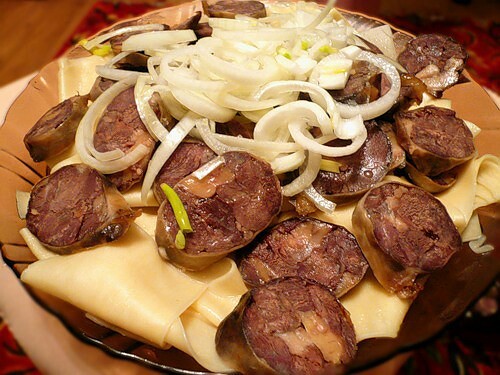
Qazi, Karta, Shuzhuk / Horsemeat
Horsemeat is very much loved and cooked in different ways. Horsemeat is the most valuable kind of meat for Kazakh, and if you are offered to taste it, it is a sign of great respect and hospitality. There is also Sur Yer, the dried horsemeat.
Significant food of the Kazakhs, which perhaps must be tasted – homemade sausages made of horsemeat: kazy, shuzhyk, karta, etc. These dishes are considered a great delicacy that contains energy.
Beshbarmak
Beshbarmak is the king of Kazakh dastarkhan. This celebratory dish consists of several types of boiled meat (beef, lamb, and horsemeat, including homemade horse sausage), boiled thin-rolled dough, and onion dressing. Normally it goes along with the square-shaped noodles. Nevertheless, depending on the region, the dish varies as for instance in Western Kazakhstan they add potatoes to beshbarmak or even substitute the meat with fish next to the Caspian sea and therefore prepare something called “fishbarmak”.
The name “beshbarmak” translates as “five fingers” and traditionally in the times past, this dish was eaten by bare hands. Today there is no such need, and people behind the dastarkhan are quite normal with cutlery but you can still sometimes meet people eating beshbarmak with fingers.
Kuirdak
Kuirdak / Qyyrdaq is a roast from internal organs, most often lamb liver, lungs, heart and kidneys, with potatoes. The word “Kuyrda” means “roast” or “fried”, referring to how the food is prepared.
A deep-fried, rich dish, which is cooked immediately after a sacrificed animal has been skinned only from fresh meat. Often the dish is presented to the table with the onion and other green toppings. In the restaurants of the Kazakh cities you can also find a version made from meat. This version is a lot easier for tourists as well due to the more subtle taste compared to the instestines.
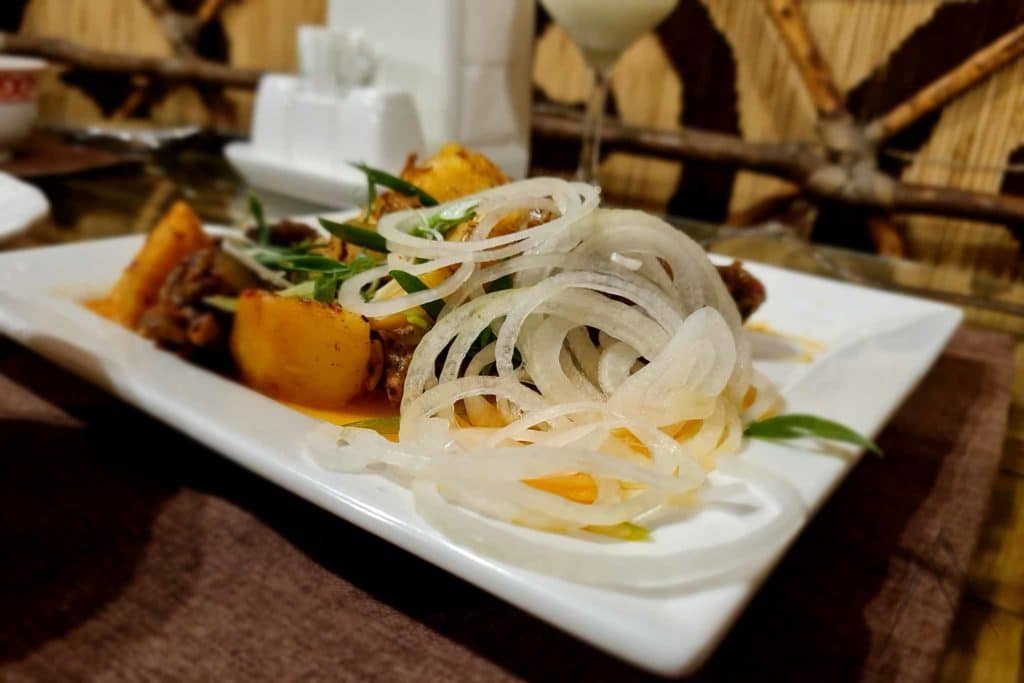
Kazakh Breads
Bread is one of the primary meals of Central Asian people. In Kazakhstan bread is prepared in many ways and eaten in large quantities.
Baursak
Sweet and crispy baursaks are a great snack in the dastarkhan. Baursaks is balls of yeast dough fried in oil. Baursak is a customary dish of Kazakh nomads. The round shape symbolizes the sun and happiness from the old days. The neighboring Kyrgyz also have their baursaks but in a square shape.
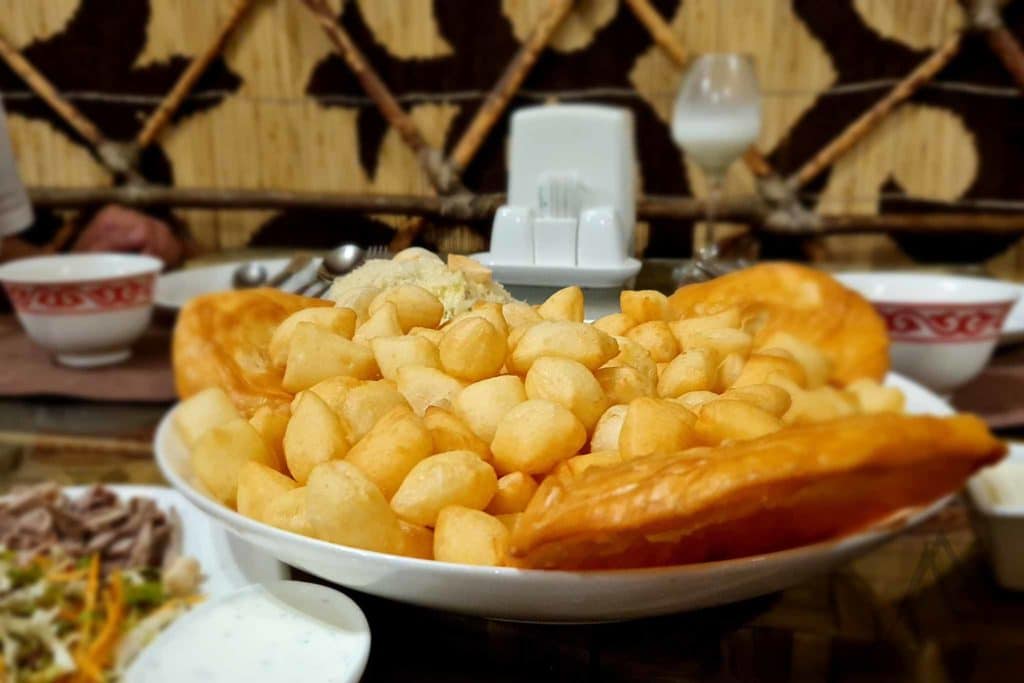
Tandyr nan
Tandyr nan possibly the favorite bread of locals. It is a type of Central Asian bread backed in tandyr (clay oven).
A disk-shaped round and crispy crust bread. Commonly eaten with tea diffing into the various jams and compotes, kaymak or butter.
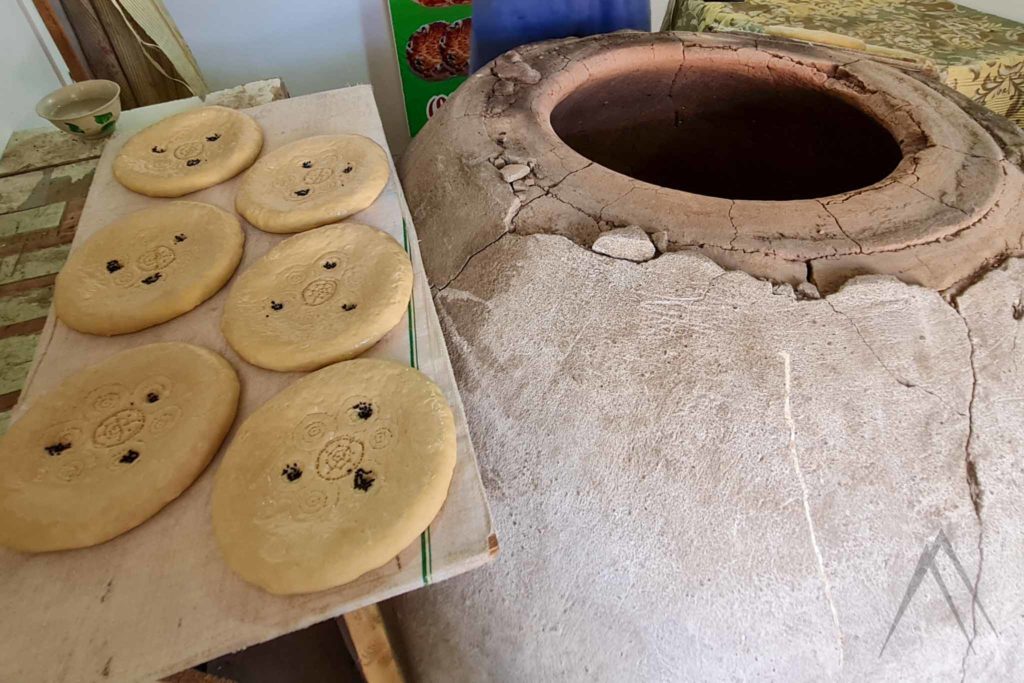
Shelpek
Shelpek is a traditional Central Asian fried bread that is normally consumed all around the region. The dough is shaped into balls and fried in hot oil until gaining a golden color. Shelpek is usually prepared with yeast, thus the dough stays soft for a longer time. Shelpek is made from basic ingredients like flour, milk, sugar, butter, sour cream, kaymak, baking soda, salt and oil.
Kazakh National Drinks
Koumiss (horse milk)
Koumiss (Кумыс) is a fermented horse milk drink, which nomads have enjoyed for ages. It is a sour-milk, low-alcohol beverage made of mares’ milk and it is tart, acidic and believed being good for one’s digestion.
Shubat (camel milk)
Shubbat is a beverage of life, which is made of camel’s milk. It is believed that shubbat is useful if you have asthma, tuberculosis, inflammation of the liver, diabetes, and psoriasis.
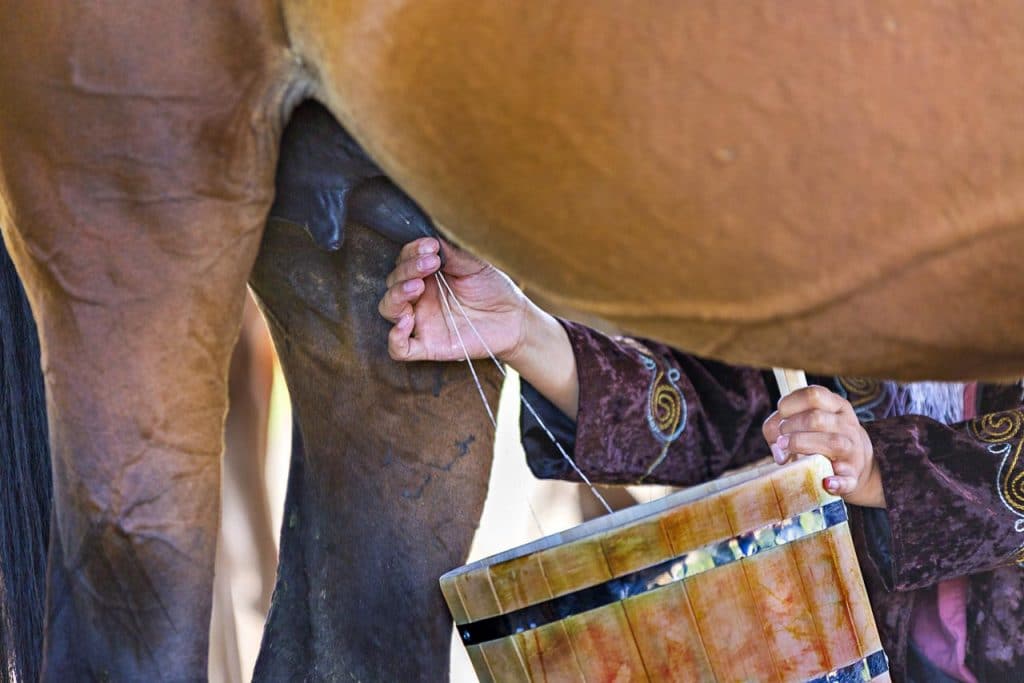
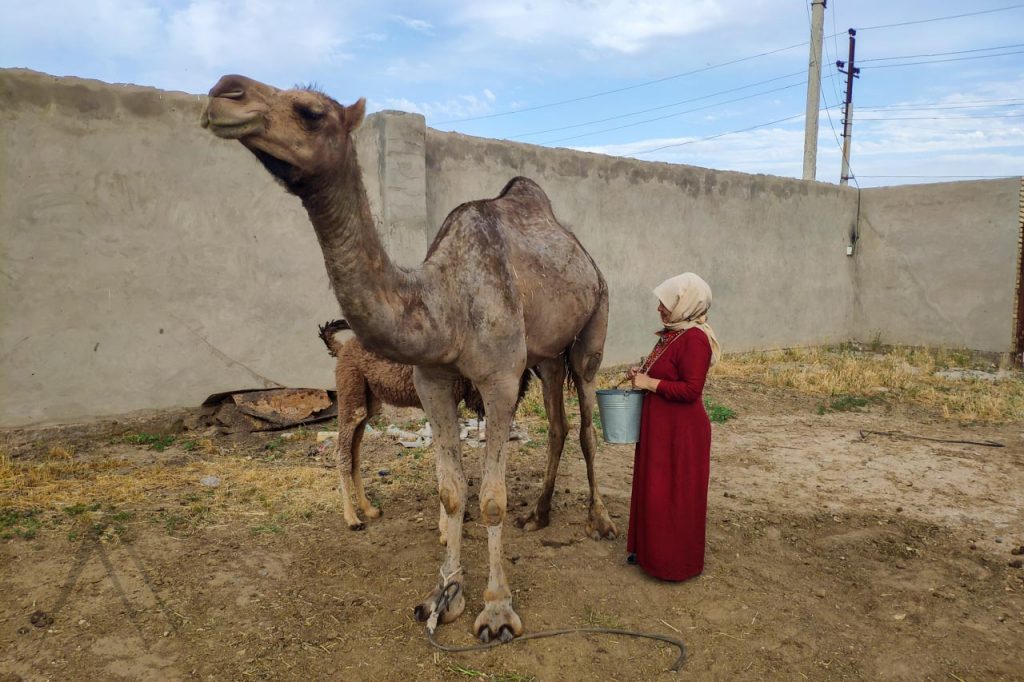
Note that sometimes shubbat as well as the koumiss may have unpredictable effects on your stomach as the drink has a high-fat content and a very different bacterial culture that your stomach might have gotten used to.
Kazakh Nomad snack
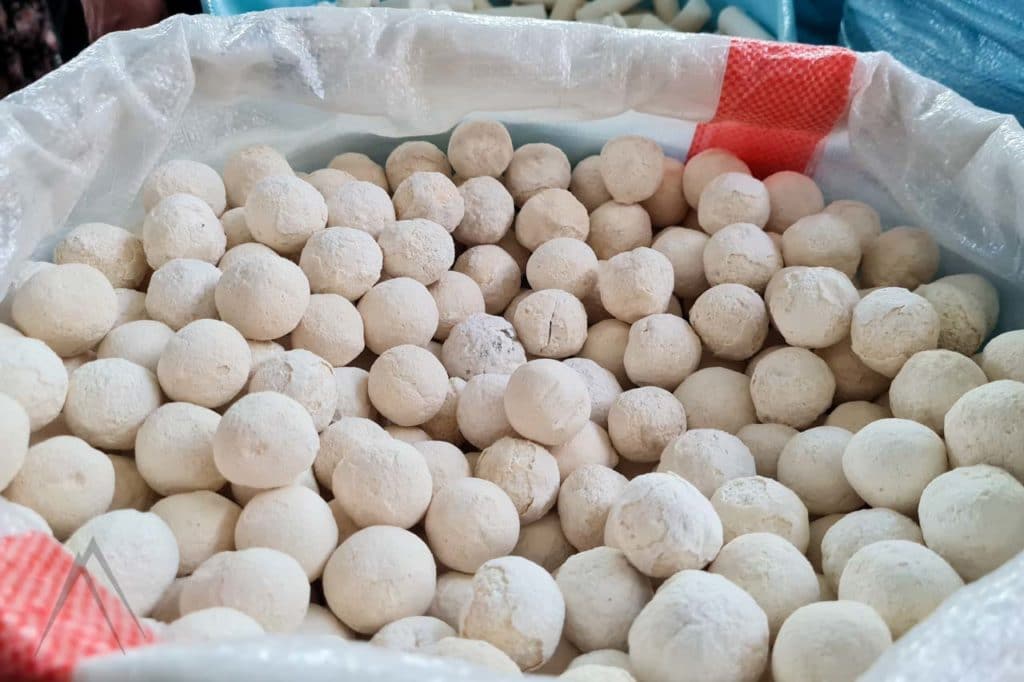
Qurt
Salted balls of dried cottage cheese are called Qurt or Kurt. It is a favorite delicacy of Kazakhstani kids and also a great way to preserve dairy products in the long journey, which was very important for nomads.
Uyghur cuisine in Kazakhstan
Lagman
Central Asia is a home for Uigur diaspora residents. They are Central Asian people of Turkic origin, who once lost their territories during the Chinese expansion. Many residents of the newly formed Xinjiang Uyghur Autonomous Region of the People’s Republic of China moved across Central Asian countries fearing Chinese pressure. Today, the Uighurs live compactly in Almaty, Bishkek, Tashkent as well as other countries and regions of Central Asia.
The main and favorite Uighur dish in Central Asia is served everywhere is. Lagman. It is hand-pulled noodles with meat and vegetable gravy. There are several types of Lagman which vary in the bright tastes, ingredients, and well as name. For example, the Uzbek Lagman, which is also widespread in the border areas with this country, smells quite differently than the Uighur Lagman. Uzbek Lagman always looks like soup, while Uighur one can be liquid, dry, boiled, and fried, and can even turn into “ganfan” if you replace noodles with boiled rice.
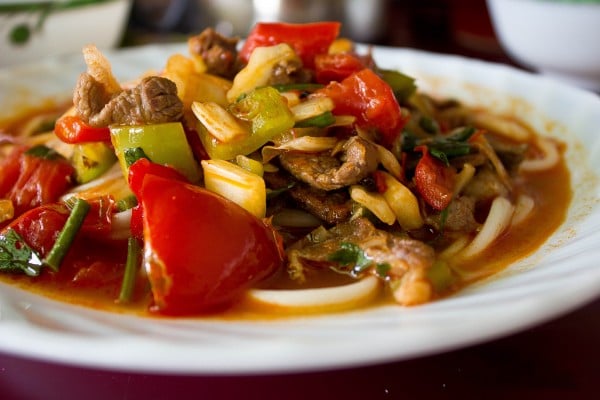
Dungan cuisine in Kazakhstan
Ashlyam-Fu
The Dungans are other minority people who once entered Central Asia in search of a better life from China. They are Chinese-speaking Muslims, who were not always accepted in the Celestial Empire, and many of them found refuge in Kazakhstan and Kyrgyzstan.
Dungan cuisine has a much greater similarity to Chinese culinary traditions. They also have Lagman, manty, and many more amazing foods, but there are more spices. The most famous and favorite dish of Dungan cuisine in Kazakhstan and Kyrgyzstan Ashlyam-Fu. It is a cold vegetable soup with starch noodles or pieces of starch served in the summer heat. Quite an unusual dish with a characteristic bitterness and very unusual structure. There is a lively community of them in Karakol (Kyrgyzstan) there is also a Dungan mosque in the town. You can also enjoy a Dungan dinner and see how the Chinese and Central Asian cuisines have mixed.
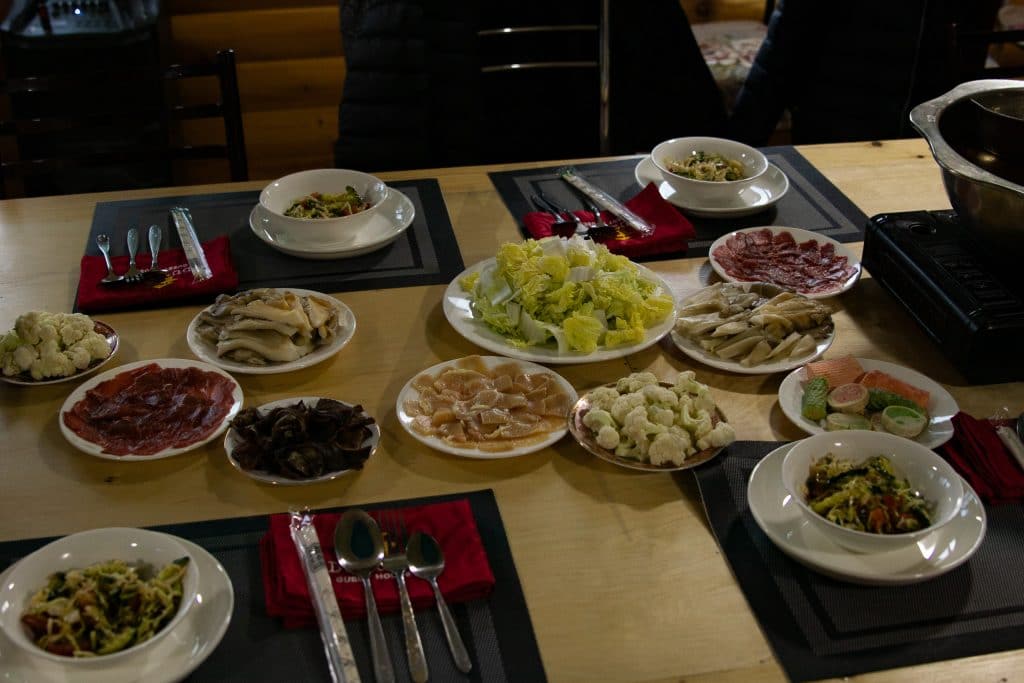

Best destinations to enjoy Kazakh cuisine
Page updated 4.1.2023